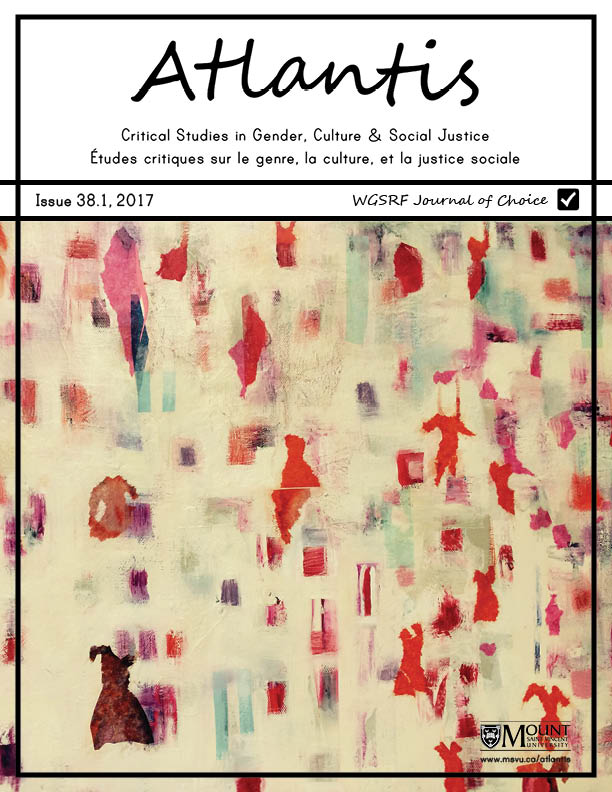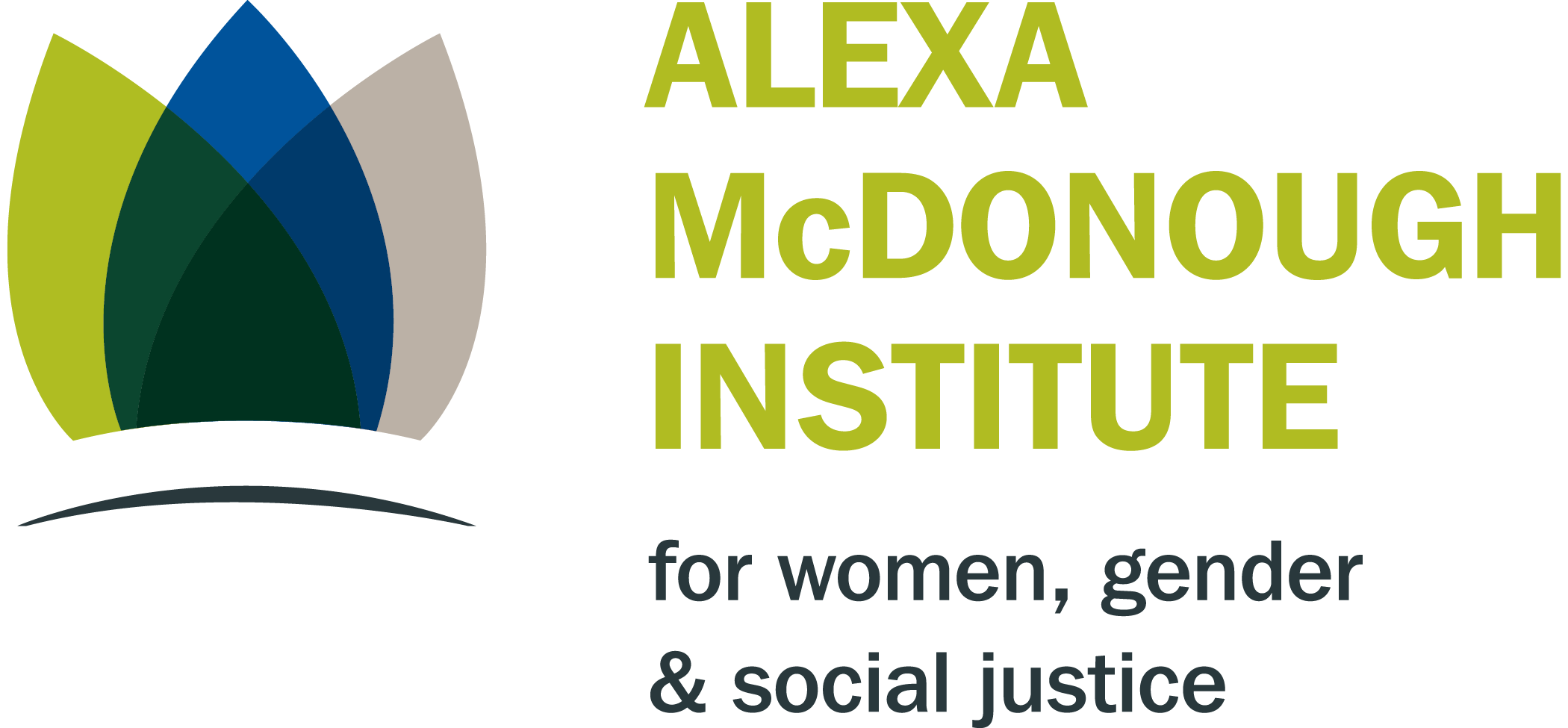Intersectionality in the Canadian Courts: In Search of a Decolonial Politics of Possibility
Keywords:
Anti-Discrimination Law, Gender RepresentationsAbstract
This critical examination of intersectionality in the context of Canadian anti- discrimination cases outlines the Lockean foundations of identity construction in the courts. By framing Jasbir Puar’s articulation of intersectionality as an invitation to create more complex cartographies, the author challenges the hegemony of certain kinds of knowledge production in sites of institutional power. Résumé Cet examen critique de l’intersectionnalité dans le contexte des affaires de lutte contre la discrimination au Canada souligne les fondements lockiens de la construction de l’identité devant les tribunaux. En formulant l’articulation de l’intersectionnalité par Jasbir Puar comme une invitation à créer des cartographies plus complexes, l’auteure conteste l’hégémonie de certains types de production des connaissances dans les lieux de pouvoir institutionnel.References
Adewumni, Bim. 2014. “Kimberlé Crenshaw on Intersectionality: ‘I wanted to come up with an everyday metaphor that anyone could use.’” The New Statesman, April 2. http://www.newstatesman.com/lifestyle/2014/04/kimberl-crenshaw-intersectionality-i-wanted-come-everyday-metaphor-anyone-could.
Anderson, Benedict. 1983. Imagined Communities. London, UK: Verso.
Arneil, Barbara. 1996. John Locke and America: The Defence of English Colonialism. Oxford, UK: Oxford University Press.
Aylward, Carol A. 2010. “Intersectionality: Crossing the Theoretical and Praxis Divide.” Journal of Critical Race Inquiry 1 (1): 1-48.
Boggio Éwanjé-Épée, Félix, and Stella Magliani-Belkacem. 2013. “The Empire of Sexuality: An Interview with Joseph Massad.” Jadaliyya, March 5. http://www.jadaliyya.com/pages/contributors/123933.
Brah, Avtar, and Ann Phoenix. 2004. “Ain’t I a Woman? Revisiting Intersectionality.” Journal of International Women’s Studies 5 (3): 75-86.
Brodsky, Gwen, and Shelagh Day. 1989. Canadian Charter Equality Rights for Women: One Step Forward or Two Steps Back? Ottawa, ON: Canadian Advisory Coucil on the Status of Women.
Caldwell, Paulette M. 1999. “The Content of Our Characterizations.” Michigan Journal of Race and Law 5: 53-110.
Canada (Attorney General) v. Mossop, [1993] 1 S.C.R. 554.
Cho, Sumi, Kimberlé Williams Crenshaw, and Leslie McCall. 2013. “Toward a Field of Intersectionality Studies: Theory, Applications, and Praxis.” Signs: Journal of Women in Culture and Society 38 (4): 785-810.
Chow, Rey. 2006. The Age of the World Target. Durham, NC: Duke University Press.
Collins, Patricia Hill. (1990) 2010. “Toward a New Vision: Race, Class, and Gender as Categories of Analysis and Connection.” In Doing Gender: Readings in Theory and Real World Experience, edited by Rebecca F. Plante and Lise M. Maurer, 20-33. Boulder, CO: Westview Press.
Combahee River Collective. (1977) 1983. “The Combahee River Collective Statement.” In Home Girls: A Black Feminist Anthology, edited by Barbara Smith. New York, NY: Kitchen Table: Women of Color Press.
Corbiere v. Canada (Minister of Indian and Northern Affairs), [1999] 2 S.C.R. 203; (1999) CanLII 687 (SCC).
Crenshaw, Kimberlé. 1989. “Demarginalizing the Intersection of Race and Sex: A Black Feminist Critique of Antidiscrimination Doctrine, Feminist Theory and Antiracist Politics.” University of Chicago Legal Forum 140: 139-167.
____. 1991. “Mapping the Margins: Intersectionality, Identity Politics and Violence Against Women of Color.” Stanford Law Review 43: 1241-1299.
____. 2014. “Justice Rising: Moving Intersectionality in an Age of Post Everything” (podcast). London, UK: The London School of Economics and Political Science, March 26. http://www.lse.ac.uk/newsAndMedia/videoAndAudio/channels/publicLecturesAndEvents/player.aspx?id=2360.
Cruz, Louise Esme. 2011. “Medicine Bundle of Contradictions: Female-man, Mi’kmaq/Acadian/Irish Diasporas, Invisible disAbilities, masculine-Feminist.” In Feminism FOR REAL: Deconstructing the Academic Industrial Complex of Feminism, edited by Jessica Yee, 49-60. Ottawa, ON: Canadian Centre for Policy Alternatives.
Eberts, Mary. 2010. “McIvor: Justice Delayed—Again.” Indigenous Law Journal 8 (1): 15-46.
Gleason, Philip. 1983. “Identifying Identity: A Semantic History.” The Journal of American History 69 (4): 910-931.
Grammond, Sébastien. 2009. “Discrimination in the Rules of Indian Status and the McIvor Case.” Queen's Law Journal 35 (1): 421-432.
Guattari, Félix. 2009. “I am an idea-thief.” In Soft Subversions: Texts and Interviews 1977–1985, edited by Sylvere Lotringer and translated by Chet Wiener and Emily Wittman, 22–33. Los Angeles, CA: Semiotext(e).
Hodes, Caroline. 2013. “(Re) Producing Nation at the Supreme Court of Canada: Identity, Memory, History and Equality in R. v. Kapp.” PhD Diss. Toronto, ON: York University.
Lawrence, Bonita. 2003. “Gender, Race and the Regulation of Native Identity in Canada and the United States: An Overview.” Hypatia 18 (2): 3-31.
Locke, John (1632-1704). 2008. An Essay Concerning Human Understanding, edited by Pauline Phemister. Oxford, UK: Oxford University Press.
Locke, John (1632-1704). 1980. Two Treatises on Government, edited by C. B. McPherson. Indianapolis, IN: Hacket Publishing.
Mawani, Renisa. 2011. “Cross Racial Encounters and Juridical Truths: (Dis)Aggregating Race in British Columbia’s Contact Zone.” In Cultivating Canada: Reconciliation through the Lens of Cultural Diversity, edited by Ashok Mathur, Jonathan Dewar, and Mike DeGagne, 165-192. Ottawa, ON: Aboriginal Healing Foundation.
McClintock, Anne. 1995. Imperial Leather: Race, Gender and Sexuality in the Colonial Contest. New York, NY: Routledge.
McIvor v. Canada (Registrar of Indian and Northern Affairs), (2009) BCCA 153.
Mohanram, Radhika. 1999. Black Body: Women, Colonialism, and Space. Minneapolis, MN: University of Minnesota Press.
National Centre for First Nations Governance. 2009. Memorandum: Summary of the McIvor Decisions. http://fngovernance.org/publication_docs/McIvor_review_060911.pdf.
Nixon v. Rape Relief Society, (2000) BCHRT 32; Vancouver Rape Relief Society v. Nixon et al., (2003) BCSC 1936; Vancouver Rape Relief Society v. Nixon, (2005) BCCA 601.
Patil, Vrushali. 2013. “From Patriarchy to Intersectionality: A Transnational Feminist Assessment of How Far We’ve Really Come.” Signs: Journal of Women in Culture and Society 38 (4): 847-867.
Phemister, Pauline. 2008. “Introduction.” In An Essay Concerning Human Understanding, by John Locke (1632-1704), vii-lvi. 2008. Oxford, UK: Oxford University Press.
Puar, Jasbir K. 2007. Terrorist Assemblages: Homonationalism in Queer Times. Durham, NC: Duke University Press.
____. 2012. “I would rather be a cyborg than a goddess”: Becoming-Intersectional in Assemblage Theory.” PhiloSOPHIA: A Journal of Feminist Philosophy 2 (1): 49-66.
R. v. Kapp et al., (2003) BCPC 0279.
R. v. Kapp, (2004) BCSC 958.
R. v. Kapp, (2006) BCCA 277.
R. v. Kapp, [2008] S.C.R. 41.
Steinberg, Kamini. 2009. “The New Ontario Human Rights Code: Implications for An Intersectional Approach to Human Rights Claims.” Master’s Thesis. Toronto, ON: Faculty of Law, University of Toronto.
Stote, Karen. 2015. An Act of Genocide: Colonialism and the Sterilization of Aboriginal Women. Halifax, NS: Fernwood.
Wa Thiongo, Ngugi. 1986. Decolonizing the Mind: The Politics of Language in African Literature. London, UK: Currey.
Wilkins, John S. 2009. Species: A History of the Idea. Berkeley, CA: University of California Press.
Yee, Jessica. 2011. “Introduction.” In Feminism FOR REAL: Deconstructing the Academic Industrial Complex of Feminism, edited by Jessica Yee, 11-20. Ottawa, ON: Canadian Centre for Policy Alternatives.
Yuval-Davis, Nira. 2006. “Intersectionality and Feminist Politics.” European Journal of Women’s Studies 13 (3): 193–209.
Downloads
Published
Issue
Section
License
Copyright (c) 2017 Atlantis: Critical Studies in Gender, Culture & Social Justice

This work is licensed under a Creative Commons Attribution 4.0 International License.
Authors who publish with this journal agree to the following terms:
1. Authors retain copyright and grant the journal right of first publication, with the work simultaneously licensed under a Creative Commons Attribution 4.0 International License that allows others to share the work with an acknowledgement of the work's authorship and initial publication in this journal.
2. Authors are aware that articles published in Atlantis are indexed and made available through various scholarly and professional search tools, including but not limited to Erudit.
3. Authors are able to enter into separate, additional contractual arrangements for the non-exclusive distribution of the journal's published version of the work (e.g., post it to an institutional repository or publish it in a book), with an acknowledgement of its initial publication in this journal.
4. Authors are permitted and encouraged to preprint their work, that is, post their work online (e.g., in institutional repositories or on their website) prior to and during the submission process. This can lead to productive exchanges, as well as earlier and greater citation of published work. Read more on preprints here.







